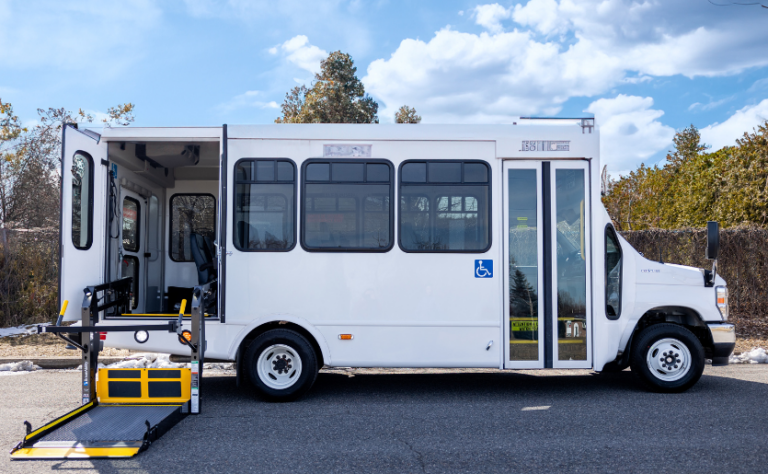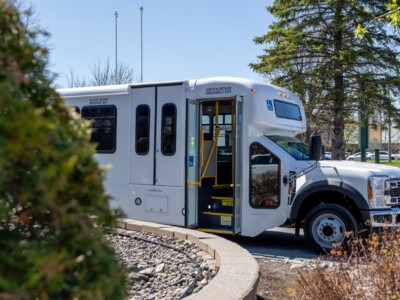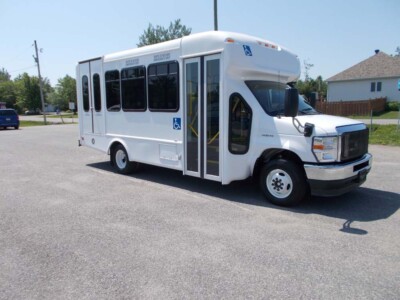Maintaining a wheelchair lift in a bus is crucial for ensuring accessibility, safety, and reliability. A properly functioning wheelchair lift allows passengers with mobility challenges to board and exit the bus easily, promoting equal access to transportation services. Regular maintenance ensures that the lift operates smoothly, reducing the risk of breakdowns that could inconvenience passengers or prevent them from using public transportation altogether.
Safety is a top priority when it comes to wheelchair lifts. Regular inspections and servicing help identify any wear and tear, mechanical issues, or malfunctions that could pose safety risks. By addressing these problems early, you prevent potential accidents, ensuring that passengers with disabilities can travel with confidence and security.
In addition to safety and accessibility, maintaining a wheelchair lift also prolongs its lifespan, reducing the need for costly repairs or replacements. A well-maintained lift operates more efficiently, improving the overall performance of the bus and minimizing downtime due to unexpected repairs. For bus operators, this means fewer disruptions in service and better reliability for all passengers.
How to Maintain Your Braun Wheelchair Lift
Proper maintenance is essential for keeping wheelchair lifts safe and working smoothly. Daily inspections by the transit agency can detect wear, damage, or other issues before they become bigger problems. BraunAbility recommends that all maintenance and lubrication be performed by an authorized service representative at specific intervals based on the number of lift cycles.
BraunAbility lifts are built with durable parts to reduce wear and ensure smooth operation, but regular service is still important. When servicing the lift, cleaning and lubrication should follow the recommended procedures, using water for cleaning and specific oils or grease to prevent damage. Lifts used in harsh environments may need more frequent inspections.
Each lift is equipped with a cycle counter that tracks usage, helping operators know when maintenance is needed. If any signs of damage or improper function are detected, lift use should stop immediately, and an authorized technician should be contacted for inspection.

Maintenance and Lubrication Schedule
Cycle Counter: NCL-2 Series lift models are equipped with a cycle counter located on the top of the pump module. This cycle counter allows the lift attendant/operator to easily track the number of cycles during daily inspections of the lift.
Every 750 cycles, several parts of the wheelchair lift, including the outer barrier pivot points, latches, and gas springs, need to be inspected and lubricated. Light oil or grease should be applied to key components, as indicated in the lubrication diagram. During the inspection, check for wear, damage, or misalignment, and ensure all parts are secure and functioning properly. If any parts are damaged or not working, they should be replaced or fixed. Inspect the outer barrier latch for proper operation, secure attachment, and missing springs. Adjust the fold pressure as needed and verify the FMVSS 403/404 Certification. Check the lift for wear, damage, abnormal conditions, and any rattles.
In addition to the inspections mentioned above, at 1500 cycles, inspect various components of the lift, including pivot pin bearings, arm bearings, roll stop levers, and handrails, for wear or damage. Ensure proper operation and secure attachment of all parts, including the Lift-Tite™ latch rollers, inner roll stop, and microswitches. Check that the lift operates smoothly and inspect locks and torsion springs for wear or damage.
Inspect various snap rings, including those on fold arms, latch rollers, and gas springs, for secure attachment and damage. Check inner fold arm pins, axles, and bearings for wear and ensure proper securement. Additionally, remove the pump module cover to inspect hydraulic hoses for leaks, electrical connections for damage, and relays, fuses, and switches for securement or wear.
At 4500 cycles, inspect cotter pins on the platform, check hydraulic fluid levels, and inspect the hydraulic system for leaks, wear, or damage. Examine the parallel arms, bearings, pivot pins, and mounting bolts for wear or damage. Inspect platform components, fold arms, saddle, gas springs, and bearings for proper operation and securement. Additionally, check vertical arm covers, power cables, mounting, decals, and anti-skid features for any issues.
Repeat all previously listed inspection, lubrication and maintenance procedures at 750 cycle intervals (or per vehicle maintenance schedule).
Maintaining your wheelchair lift is essential for ensuring the safety and comfort of your passengers while also minimizing bus downtime. Regular inspections and timely repairs keep the lift in optimal working condition, preventing breakdowns that could disrupt service. By prioritizing maintenance, you not only extend the life of the lift but also provide a reliable, accessible experience for all passengers, ensuring your bus remains operational and efficient.




